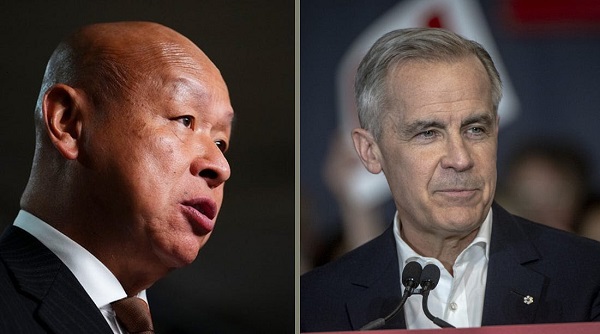Health
Alabama ban on nearly all abortions in GOP governor’s hands

MONTGOMERY, Ala. — Alabama legislators have given final approval to a ban on nearly all abortions, and if the Republican governor signs the measure, the state will have the strictest abortion law in the country.
The legislation would make performing an abortion a felony at any stage of pregnancy with almost no exceptions. The passage Tuesday by a wide margin in the GOP-led Senate shifts the spotlight to Gov. Kay Ivey, a fixture in Alabama politics who’s long identified as anti-abortion.
Ivey has not said whether she’ll sign the bill. Sponsor Rep. Terri Collins says she expects the governor to support the ban. And the lopsided vote suggests a veto could be easily overcome. But an Ivey spokeswoman said before Tuesday’s vote that “the governor intends to withhold comment until she has had a chance to thoroughly review the final version of the bill that passed.”
In Alabama and other conservative states, anti-abortion politicians and activists emboldened by the addition of conservative justices to the U.S. Supreme Court hope to ignite legal fights and eventually overturn the landmark 1973 decision Roe v. Wade, putting an end to the
“Roe v. Wade has ended the lives of millions of children,” Alabama Republican Sen. Clyde Chambliss said in a statement. “While we cannot undo the damage that decades of legal precedence under Roe have caused, this bill has the opportunity to save the lives of millions of unborn children.”
Democrats didn’t shy away from blasting their GOP counterparts.
“The state of Alabama ought to be ashamed of herself. You ought to be ashamed. Go look in the mirror,” Sen. Bobby Singleton said “Women in this state didn’t deserve this. This is all about political grandstanding.”
The bill would make performing an abortion a felony punishable by up to 99 years or life in prison for the abortion provider. The only exception would be when the woman’s health is at serious risk. Under the bill, women seeking or undergoing abortions wouldn’t be punished.
Kentucky, Mississippi, Ohio and Georgia have approved bans on abortion once a fetal heartbeat is detected, which can occur in about the sixth week of pregnancy. The Alabama bill goes further by seeking to outlaw abortion outright.
Alabama senators rejected an attempt to add an exception for rape and incest. The amendment was voted down 21-11, with four Republicans joining Democrats in seeking the amendment.
Supporters had argued that exceptions would weaken their hope of creating a vehicle to challenge Roe. Collins said that the law isn’t meant to be a long-term measure and that lawmakers could add a rape exception if states regain control of abortion access.
“It’s to address the issue that Roe. v. Wade was decided on. Is that baby in the womb a person?” Collins said.
Democrats criticized the ban as a mixture of political grandstanding, an attempt to control women and a waste of taxpayer dollars.
During debate, Singleton pointed out and named rape victims watching from the Senate viewing gallery. He said that under the ban, doctors who perform abortions could serve more prison time than the women’s rapists.
In a statement, Staci Fox of Planned Parenthood Southeast said, “Today is a dark day for women in Alabama and across this country. … Alabama politicians will forever live in infamy for this vote and we will make sure that every woman knows who to hold accountable.”
Outside the Statehouse, about 50 people rallied and chanted, “Whose choice? Our choice.” Several women dressed as characters from the “The Handmaid’s Tale,” which depicts a dystopian future where fertile women are forced to breed.
If the bill becomes law, it would take effect in six months. Critics have promised a swift lawsuit. Randall Marshall, executive director of the American Civil Liberties Union of Alabama, said a complaint is being drafted.
____
Associated Press writer Blake Paterson in Montgomery, Alabama contributed to this report.
Kim Chandler, The Associated Press
Health
Selective reporting on measles outbreaks is a globalist smear campaign against Trump administration.

From LifeSiteNews
Ontario has a larger outbreak than Texas. European cases dwarf the Texas outbreak. But the World Health Organization has launched a travel advisory for the United States.
In the currently ongoing outbreak, there have been about 572 measles cases in Ontario, Canada. This is a significantly larger outbreak than the currently hyped one in Texas, which has about 422 cases. The mainstream media has almost completely ignored the Ontario outbreak – their reporting has only focused on the Texas outbreak.
Ontario’s top public health official, Dr. Kieran Moore, does not recommend mandatory vaccination and says the standard public health measures to limit the spread are working. This is a very reasonable response, yet when Sec. Kennedy says something similar; he is viciously attacked.
It is evident by the mainstream media response to the Ontario outbreak versus the Texas outbreak that this is yet another example of the liberal media/pharma machine harassing Kennedy and President Trump.
However, this reporting has an even more sinister aspect – as the media appears to have taken their lead from the World Health Organization.
The World Health Organization has launched a travel advisory for the United States. See the screenshots below (the first screenshot is from an AI summarizer at BRAVE and the second one is from the WHO website):


But what about Canada’s outbreak? Why isn’t Canada mentioned in the travel advisory? Was it an oversight? Did the WHO release a travel advisory just for Canada?
The answer is that the WHO has not put out a travel advisory for Canada, or Ontario, Canada.
In fact, the AI summarizer at BRAVE is clear that the WHO doesn’t put out travel advisories for individual countries, like Canada… The new normal is that the WHO puts out special advisories only for the United States <insert sarcasm>.

And in fact, a search on the WHO website yields not a single mention of the measles outbreak in Canada.

In fact, the WHO places the 422 measles cases in the United States on par with the earthquake in Myanmar, which may have killed up to 10,000 people, all told.
But somehow the 572 cases of measles in Canada don’t deserve a mention.

But wait – the story gets even more bizarre.
The European Region, which includes central Asia, continues to have a significantly high number of measles cases.
The WHO European Region has a population of approximately 745 million people, and had about 127,350 measles cases last year, or 1 in 5,850 people.
Yet – crickets from mainstream media on this factoid.

Why the outcry over 422 measles in Texas?
Here are some ideas:
- To reduce support for RFK Jr., Trump, and MAHA by the American people.
- To scare parents into vaccinating.
- To increase the money going to public health for vaccine stockpiling.
- To support the liberal left in their obsessive hatred of anything MAHA.
- Because the WHO put out a travel advisory.
In the meantime, the WHO has announced that, despite budgetary cuts, they have a $2.5 billion gap for 2025-2027. WHO Director General Tedros correctly blamed Trump for the deficit. However, what Tedros gets wrong is that this deficit is a well-deserved consequence of years of corruption at the WHO leading to this outcome.
This is how it is done, folks.
This is called retaliation by the World Health Organization against the Trump administration.
Another wrap-up smear in action. The deep state and the globalists are pulling out all the stops to attack Trump and Kennedy via “trumped-up” WHO travel advisories and emergency reports that are then reported on breathlessly and uncritically by mainstream media. The propaganda machine continues unabated.
Reprinted with permission from Robert Malone.
COVID-19
Trump’s new NIH head fires top Fauci allies and COVID shot promoters, including Fauci’s wife

From LifeSiteNews
“During the pandemic Fauci’s bioethicist wife, Christine Grady, offered nurses a choice: Get vaccinated, or lose your job,” noted The COVID-19 History Project on X. “Yesterday, she was offered a choice: Transfer to an office in Alaska, or lose your job. What’s fair is fair. Everyone deserves a choice,” explained the COVID watchdog account.
On day one of his new job as head of the National Institutes of Health (NIH), Dr. Jay Bhattacharya removed four powerful agency heads, including Dr. Anthony Fauci’s wife, Christine Grady, and others associated with the questionable handling of the COVID-19 shots.
Grady, who had served as chief of the agency’s Department of Bioethics, and other longtime Fauci allies in top posts at the NIH involved in the development and distribution of the untested COVID shots produced by Big Pharma were offered jobs in Alaska and other remote locales far away from the NIH’s sprawling Bethesda, Maryland, complex just outside Washington, D.C.
The purge came amid massive layoffs in health-related agencies under the umbrella of Health and Human Services (HHS), now headed by the Make America Healthy Again (MAHA) movement’s founder, Robert F. Kennedy Jr., who has long questioned vaccine safety and American medicine’s focus on treating disease rather than preventing it.
A total of about 20,000 personnel – mostly bureaucrats – or about 25 percent of the HHS workforce have been or will be handed pink slips amid Kennedy’s realignment of the agency.
MAHA critics were quick to call Tuesday’s axing of Fauci confederates as “one of the darkest days in modern scientific history” fueled by Kennedy’s desire to exact revenge on Fauci’s former trusted associates who represent the antithesis of the MAHA movement.
However, the revamping of the federal government’s side of the health industry is no more harsh than the treatment meted out by those formerly in control who, at best, suppressed, and worst, punished those who questioned their iron grip on health-industry regulations and standards.
For years, Kennedy’s critics have dismissed his quest to revamp healthcare and his questioning of the efficacy of the COVID-19 mRNA jabs as anti-science, labeling him as an “anti-vaxxer” in order to suppress his messaging.
Dr. Francis Collins – whom Bhattacharya replaced as head of NIH – in an October 2020 email to Fauci condemned Bhattacharya as a “fringe epidemiologist” because he had co-authored the Great Barrington Declaration, which criticized harmful COVID lockdown policies.
“During the pandemic Fauci’s bioethicist wife, Christine Grady, offered nurses a choice: Get vaccinated, or lose your job,” noted The COVID-19 History Project on X.
“Yesterday, she was offered a choice: Transfer to an office in Alaska, or lose your job. What’s fair is fair. Everyone deserves a choice,” explained the COVID watchdog account.
“We spend 4X more than Italy on healthcare — and live 7 years less. Dead last in cancer rates. This isn’t science — it’s a system profiting off sick kids,” explained Calley Means, RFK Jr. HHS advisor during an interview with Laura Ingraham following the NIH firings.
“Firing the people who oversaw this? That’s step one,” declared Means.
Other NIH officials who were offered reassignments were Dr. Jeanne Marrazzo, who succeeded Fauci as head of the National Institute of Allergy and Infectious Diseases (NIAID), Dr. Clifford Lane, a close Fauci ally who served as deputy director for clinical research at NIAID, and Dr. Emily Erbelding, NIAID’s microbiology and infectious diseases director.
-

 2025 Federal Election2 days ago
2025 Federal Election2 days ago‘Coordinated and Alarming’: Allegations of Chinese Voter Suppression in 2021 Race That Flipped Toronto Riding to Liberals and Paul Chiang
-

 2025 Federal Election2 days ago
2025 Federal Election2 days ago‘I’m Cautiously Optimistic’: Doug Ford Strongly Recommends Canada ‘Not To Retaliate’ Against Trump’s Tariffs
-

 Business1 day ago
Business1 day agoCalifornia planning to double film tax credits amid industry decline
-

 Business2 days ago
Business2 days agoCanada may escape the worst as Trump declares America’s economic independence with Liberation Day tariffs
-

 Alberta2 days ago
Alberta2 days agoBig win for Alberta and Canada: Statement from Premier Smith
-

 Catherine Herridge1 day ago
Catherine Herridge1 day agoFBI imposed Hunter Biden laptop ‘gag order’ after employee accidentally confirmed authenticity: report
-

 COVID-1919 hours ago
COVID-1919 hours agoTrump’s new NIH head fires top Fauci allies and COVID shot promoters, including Fauci’s wife
-

 Business1 day ago
Business1 day agoB.C. Credit Downgrade Signals Deepening Fiscal Trouble






